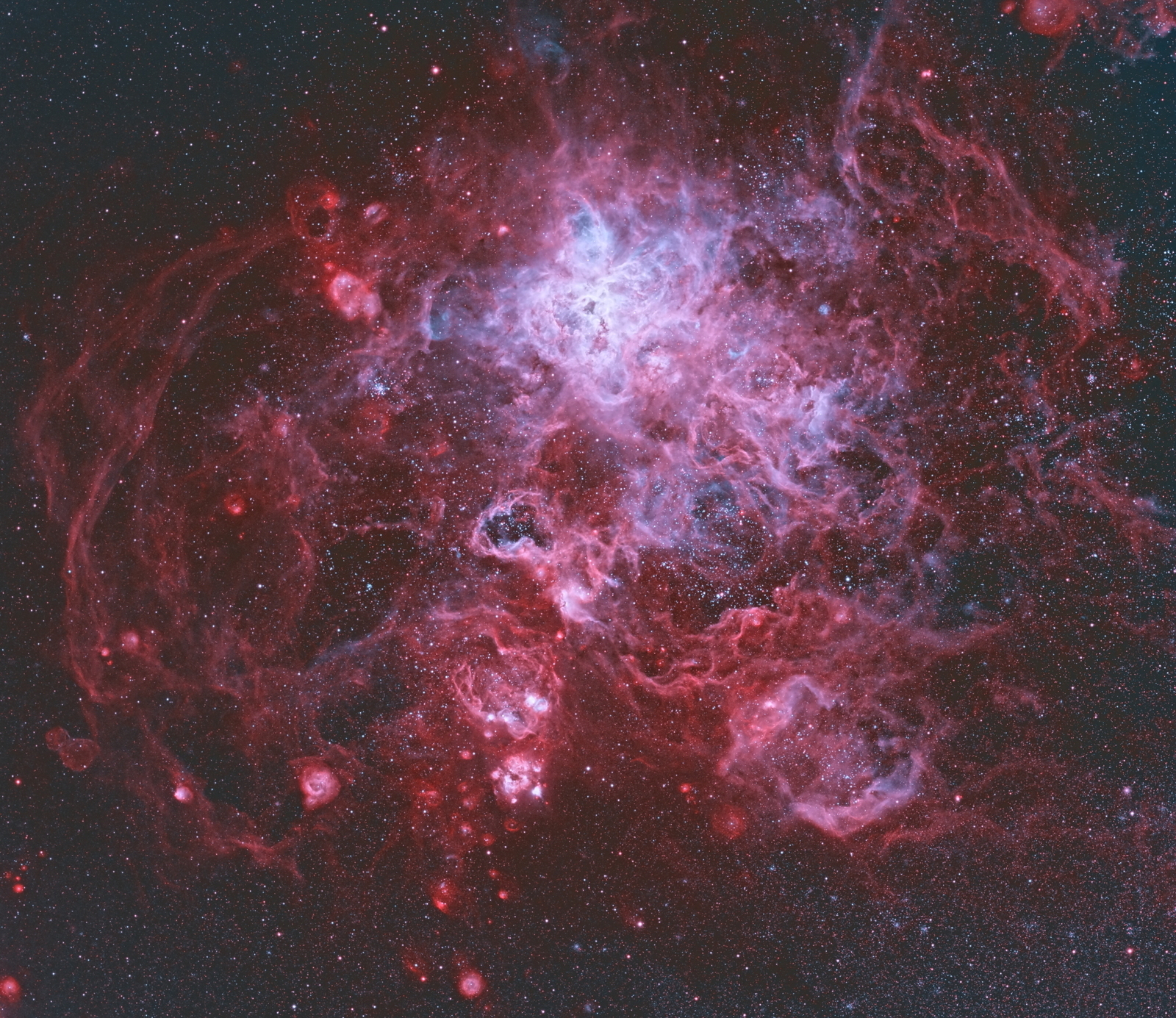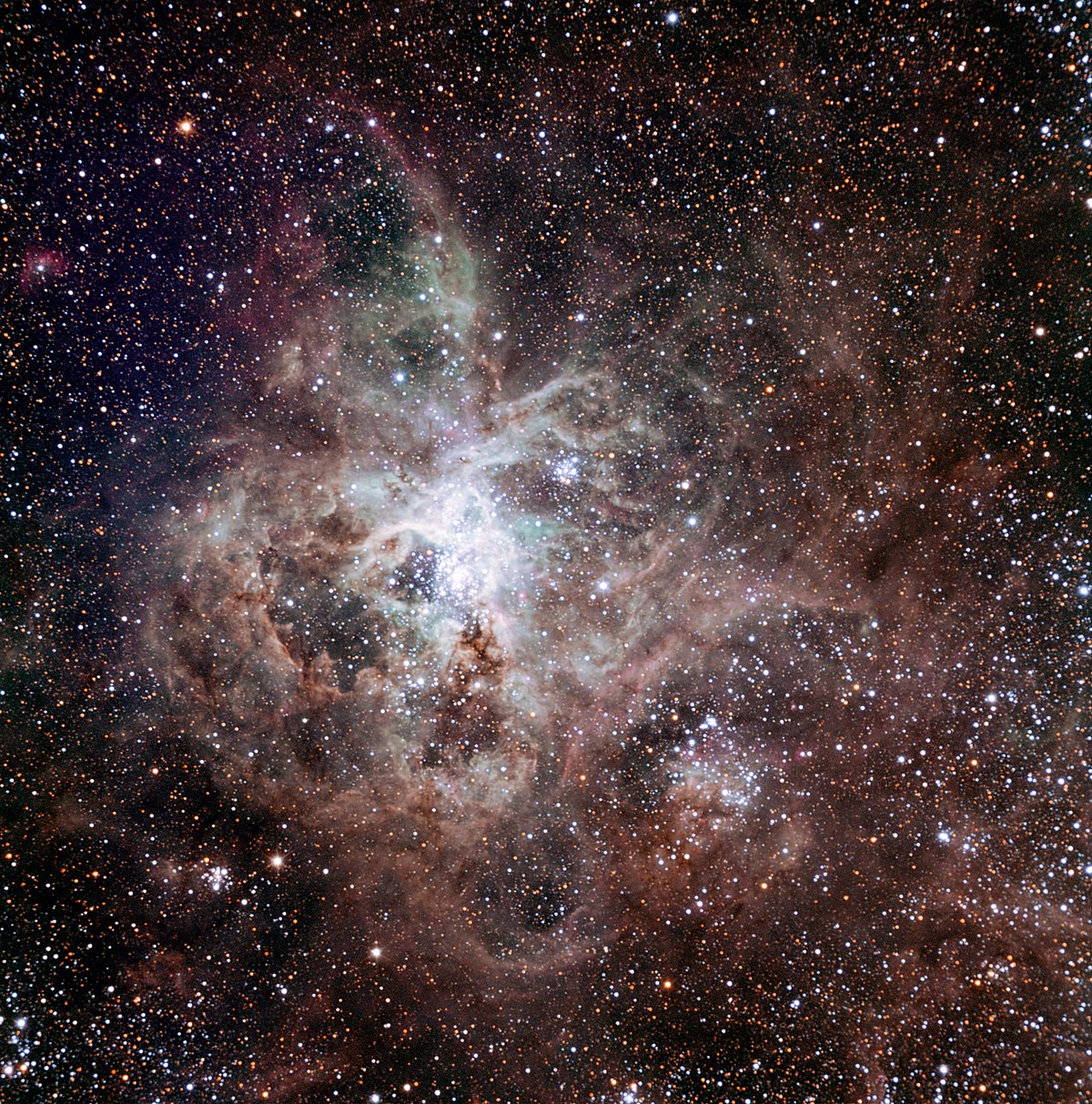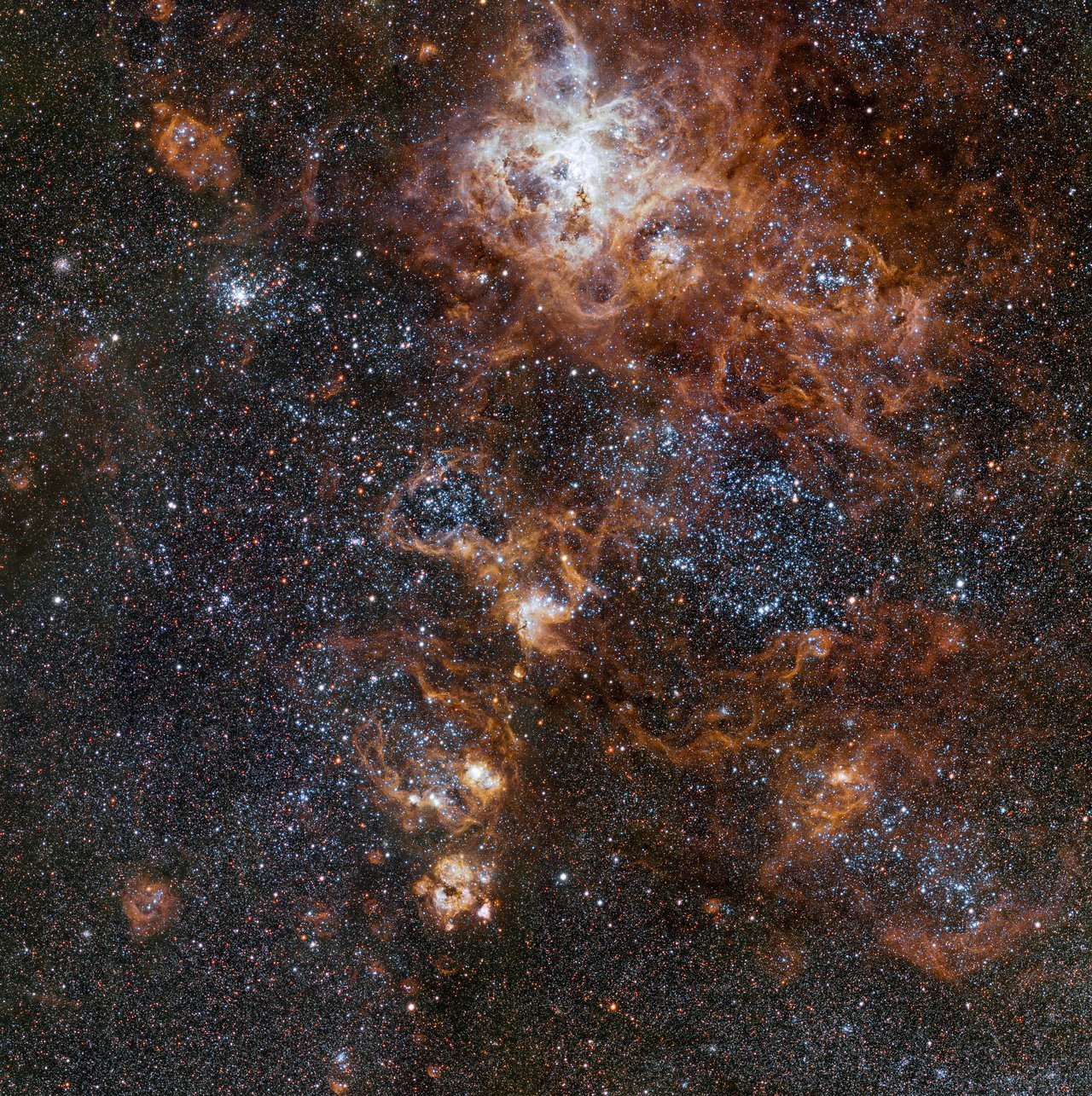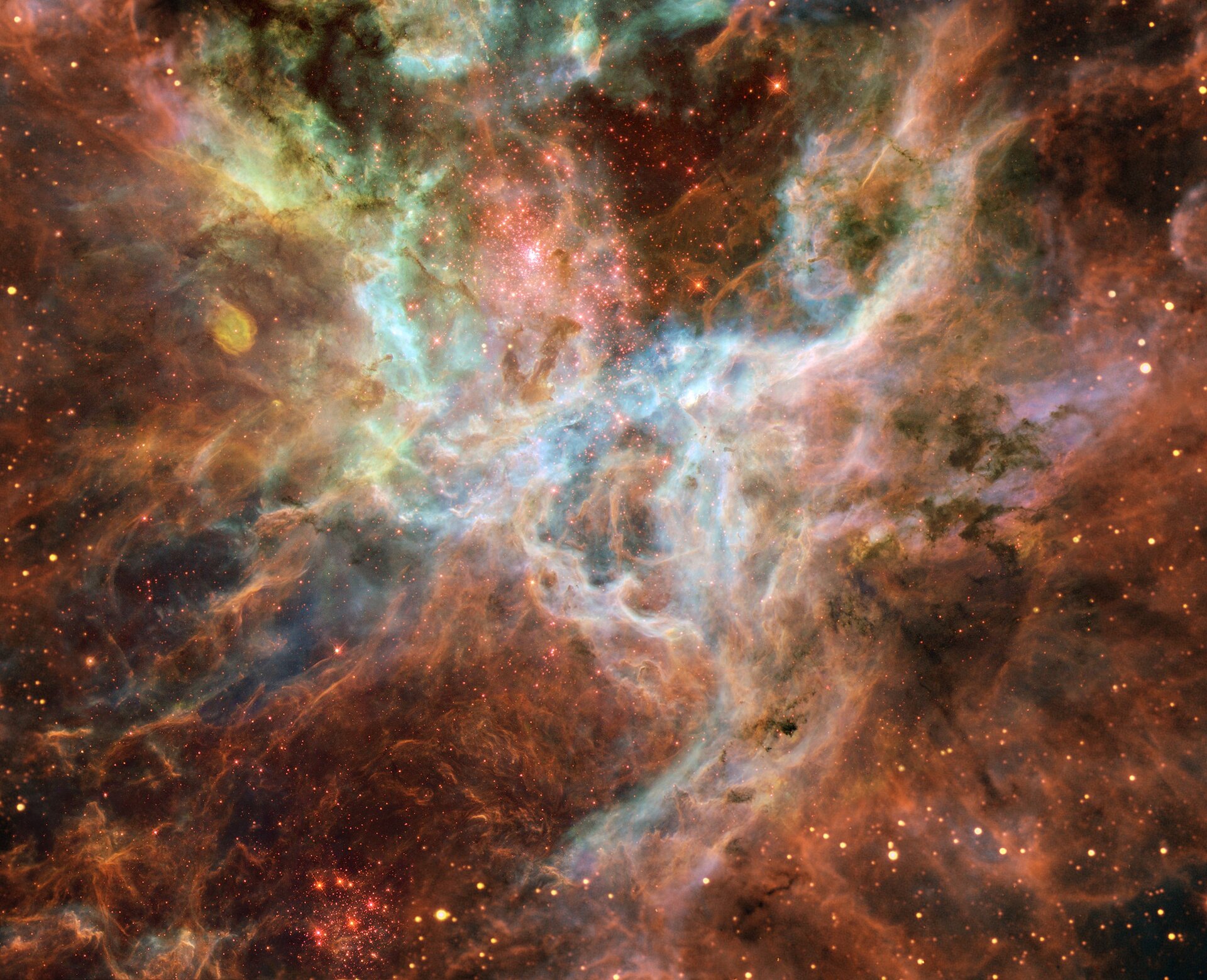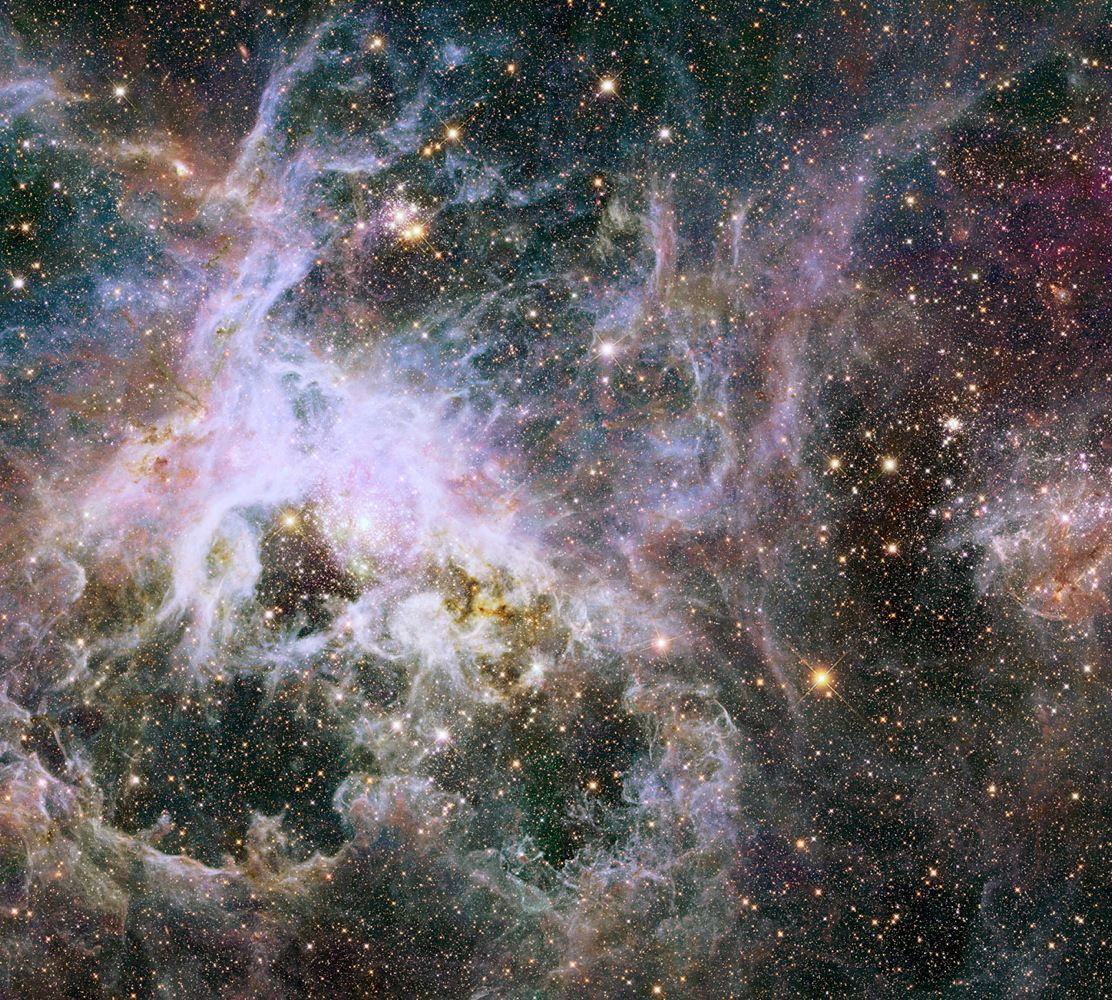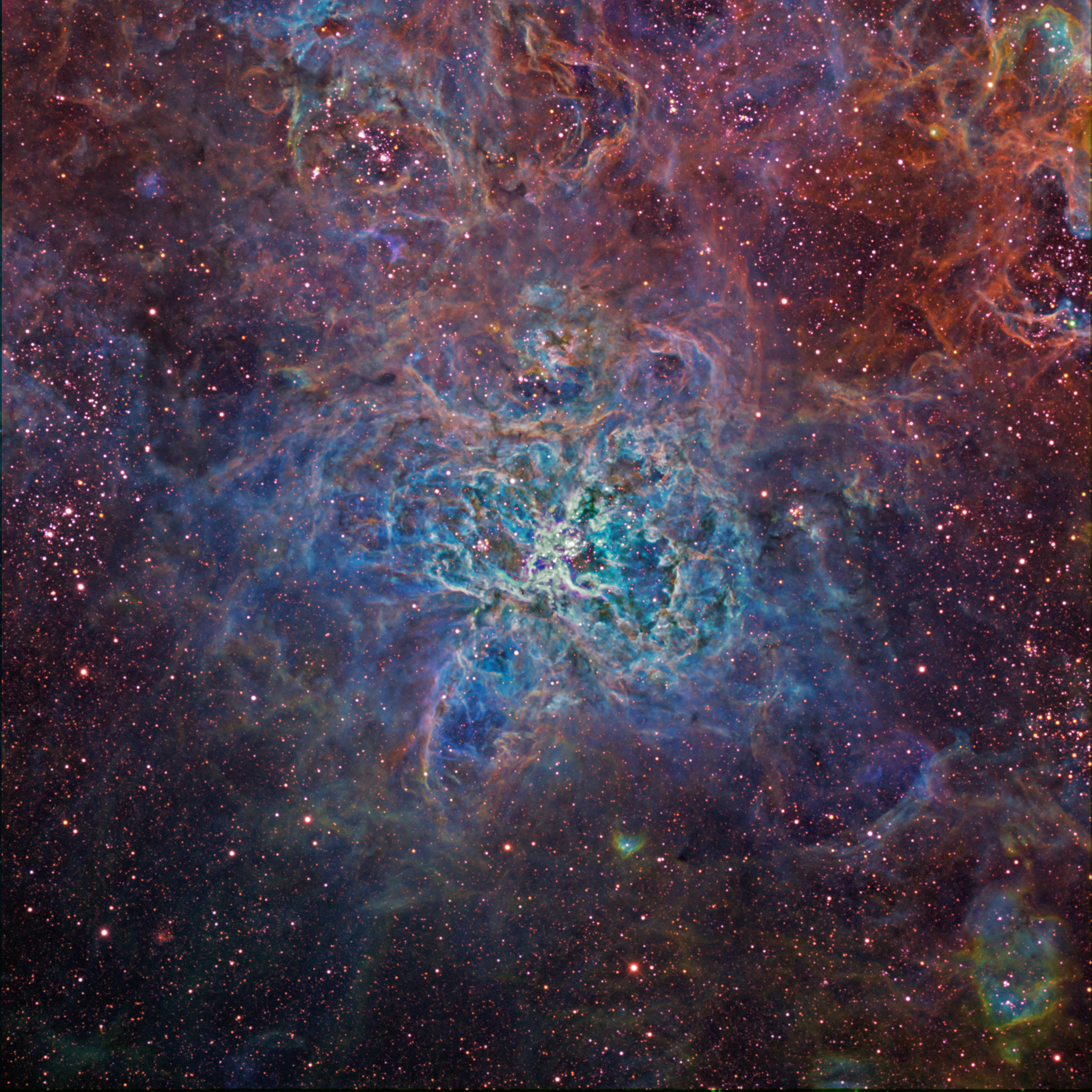Tarantula Nebula

It is the brightest region of star formation in the local universe.
Tarantula nebula. The nebula consists of a cloud of interstellar gas principally hydrogen lit from within by young hot stars that ionize the gas around them. Tarantula nebula also called 30 doradus catalog number ngc 2070 immense ionized hydrogen region in the large magellanic cloud a satellite galaxy of the milky way system in which earth is located. The tarantula nebula is a large emission nebula located in the southern constellation dorado. The nebula is also known as 30 doradus.
Nasa has released an incredible high resolution image of the distant tarantula nebula captured by the soon to be retired spitzer space telescope. The tarantula nebula seen in this image by the spitzer space telescope was one of the first targets studied by the infrared observatory after its launch in 2003 and the telescope has revisited. To celebrate its 22nd anniversary in orbit the hubble space telescope released a dramatic new image of the star forming region 30 doradus also known as the tarantula nebula because its glowing filaments resemble spider legs. The tarantula nebula also known as 30 doradus is an h ii region in the large magellanic cloud lmc from the solar system s perspective forming its south east corner.
In the case of the large magellanic cloud such studies have helped scientists learn about rates of star formation in galaxies other than the milky way. Tarantula nebula 04 20 12 to celebrate its 22nd anniversary in orbit the hubble space telescope has released a dramatic new image of the star forming region 30 doradus also known as the tarantula nebula because its glowing filaments resemble spider legs. The space agency notes that the nebula was one of. This ground based view of the tarantula nebula shows the nebula in its entirety.
But were the tarantula nebula closer say 1 500 light years distant like the local star forming orion nebula it would take up half the sky.

